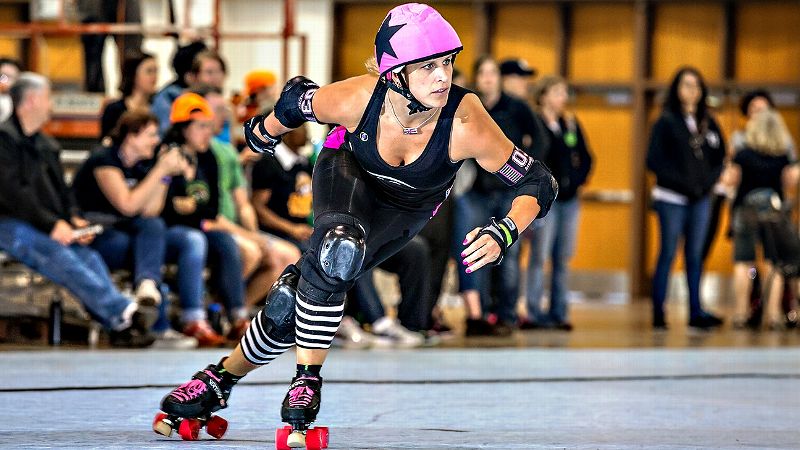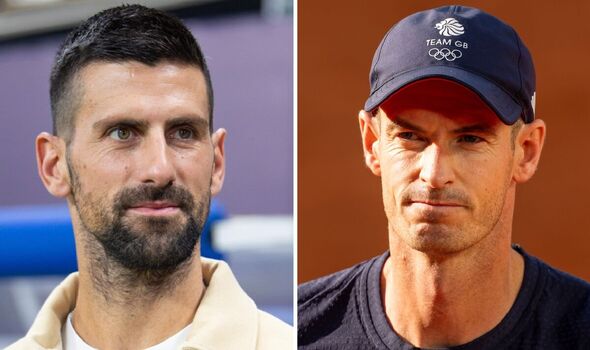Joan Burton: ‘We’re the strongest growing economy in Europe at this point’
September 18, 2014
Europe’s Bargain
September 19, 2014
Julie Brandt-Glass was already a decorated in-line star when she caught the roller derby bug.
Julie Brandt-Glass already knew how to roll with the best of ’em when she wandered into a roller derby tournament six years ago in Portland, Oregon. The Michigan native had won pretty much everything a person can win on in-line skates, an X Games gold, a national championship and a World Cup gold already sitting on her shelf.
But as she sat in the stands that day in 2008 at the Women’s Flat Track Derby Association Championships, she could almost feel the quads reeling her in.
“I was blown away by what I was seeing,” Brandt-Glass said. “And what I was feeling.”
Her old friend and skating coach, Robb Dunn, was coaching the Detroit Derby Girls at the tourney that day, and he instantly put on his recruiting cap.
“I talked to him about the sport,” Brandt-Glass said. “And he had so much passion about it that I just knew it was something that I had to try.”
And that’s how “Atomatrix,” one of the greatest scorers on the planet, was born.
Brandt-Glass went home and enlisted with the Oly Rollers, a new squad near her home in Olympia, Washington. The following year, in their first full season of WFTDA play in 2009, the Oly Rollers upset powerhouses like Gotham and Rose City and went on to win the league championship and the coveted Hydra trophy. By 2011, Brandt-Glass had become part of roller derby’s Team USA, which dominated the first roller derby World Cup that December.
This week, the 35-year-old Brandt-Glass will skate with Arizona Roller Derby, a team she joined last fall, at the WFTDA Roller Derby International Championships divisionals. AZRD plays Pittsburgh’s Steel City in its first postseason game Friday in Evansville, Indiana. The tournament has an international flavor as well, with teams from Toronto and London represented.
Brandt-Glass has a theory as to why she — and many others in one of the fastest-growing sports — was drawn to derby.
“On in-lines, it’s very cutthroat with your competitors, and you’re not very friendly,” Brandt-Glass said. “[Derby] is equally competitive, but there is more teamwork, and the warm culture is refreshing.”
Roller derby is a full-contact sport played by two teams of five that skate counterclockwise around a track. The jammer — which is Brandt-Glass’ primary position — is the designated scorer who wears a star on her helmet and gains points by lapping members of the opposing team.
From its beginning, the sport has attracted athletes from all athletic backgrounds. Her Team USA colleague Nicole Williams — better known as Bonnie Thunders — put in more than a decade on the ice as a figure skater before joining Gotham in New York City. Williams and Brandt-Glass are considered two of the best scorers in the world.
And while roller derby built its reputation on fishnets and fisticuffs, it has morphed into a sport that attracts more and better athletes worldwide.
So what makes Julie Brandt-Glass so good? Williams is quick to raise her hand.
“Atom’s real strength is her change in speed,” Williams said. “If she gets that open line, she’s out of there.”
Williams also said that Brandt-Glass has an on/off switch that’s as fast as anyone else’s and hints that stopping her isn’t an easy task.
“She’s far superior to the rest of us in her change of speed because she’s so darn fast,” Williams said.
When asked about her technique, Brandt-Glass says she doesn’t think as much about her moves.
“My brother [David Brandt] played in the NFL, and he used to talk about the difference between quickness and speed. Some of it — fast-twitch muscle maybe — luckily I’m born with,” she said. “[But] all those years of sprint races helps.”
So does her continued attention to training.
Full-body fitness, Brandt-Glass says, is essential to success on the flat track. Her regimen includes weights, explosive jumps and dryland exercise.
Brandt-Glass’ passion for roller derby goes beyond the track. She and her husband, Doug Glass, also a decorated skater, started a skate boot company in 1997. Now known as Nistevo USA, her company owns Atom Wheels, one of the bigger players in derby-grade wheels and skate technology.
She’s even gone so far as to help the competition.
“During the World Cup in 2011, there were 13 countries [participating], and the others were just catching up to where the U.S. was,” Brandt-Glass said. “Some of the teams came in with hard plastic wheels and bearings that didn’t roll, so we stepped up and reached out to most every team.”
Brandt-Glass said her company offered teams from Europe, Australia and New Zealand free wheels, toe stops and bearings.
“If you’ve got a decent boot and wheels, you’re solid to compete at a higher level,” Brandt-Glass said.
She added that while getting Atom Wheels involved in growing the game was good business, it also “felt good to give back to the sport.”
This fall presents Brandt-Glass with an opportunity to not only to see how much the game has progressed but also to compete and raise the level of her own game.
“I’m really excited to see the [higher] level of skating and how much more competition has grown,” Brandt-Glass said. “In this year’s World Cup, 30 are teams involved, and that’s just explosive growth. But I don’t think roller derby has hit its peak just yet.”




Luke Humphries comment about Luke Littler says it all after Players Championship glory
Read more